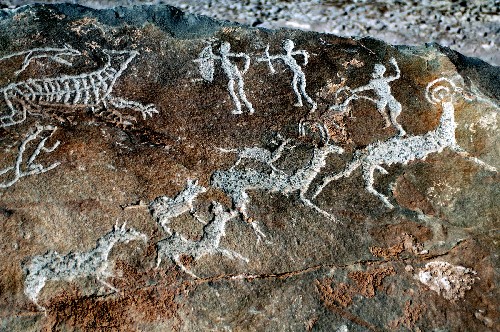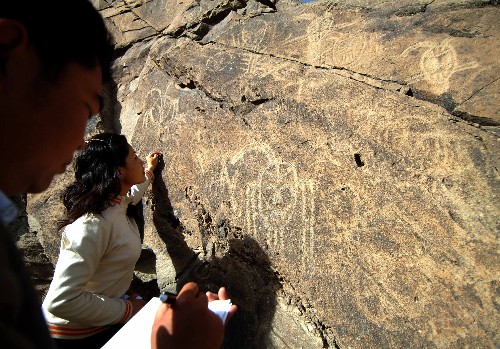| Tools: Save | Print | E-mail | Most Read |
| Cliff Carvings May Rewrite History of Chinese Characters |
| Adjust font size: |
Chinese archaeologists say they have found more than 2,000 pictographs dating back 7,000 to 8,000 years, about 3,000 years before other texts, that are believed to be the origin of modern Chinese characters. The pictographs are on rock carvings in Damaidi, at Beishan Mountain in northwest China's Ningxia Hui Autonomous Region, which covers about 450 square kilometers with more than 10,000 prehistoric rock carvings. Paleographers claim that the pictographs may take the history of Chinese characters back to 7,000 to 8,000 years ago. Previously, scholars believed the earliest Chinese characters included 3,000-year-old inscriptions on bones and tortoise shells, known as the Oracle Bones, and 4,500-year-old pottery-born inscriptions, both found in central Henan Province, one of the birthplaces of Chinese civilization. "We have found some symbols shaped like both pictures and characters," said Li Xiangshi, a cliff-carving expert at the North University of Nationalities based in Yinchuan, capital of Ningxia. "The pictographs are similar to the ancient hieroglyphs of Chinese characters and many can be identified as ancient characters," said Li. The Damaidi carvings, first discovered in the late 1980s, cover 15 square kilometers with 3,172 cliff carvings, featuring 8,453 individual figures such as the sun, moon, stars, gods and scenes of hunting or grazing. "Through arduous research, we have found that some pictographs are commonly seen in up to hundreds of pictures in the carvings," said Liu Jingyun, an expert on ancient Oracle Bone characters. "The size, shape and meanings of the pictographs in different carvings are the same," Liu said. Liu believed the meanings of all the pictographs could be deciphered on the basis of certain classifications such as gender.
(Xinhua News Agency May 18, 2007) |
| Tools: Save | Print | E-mail | Most Read |
 |
| Related Stories |
|


